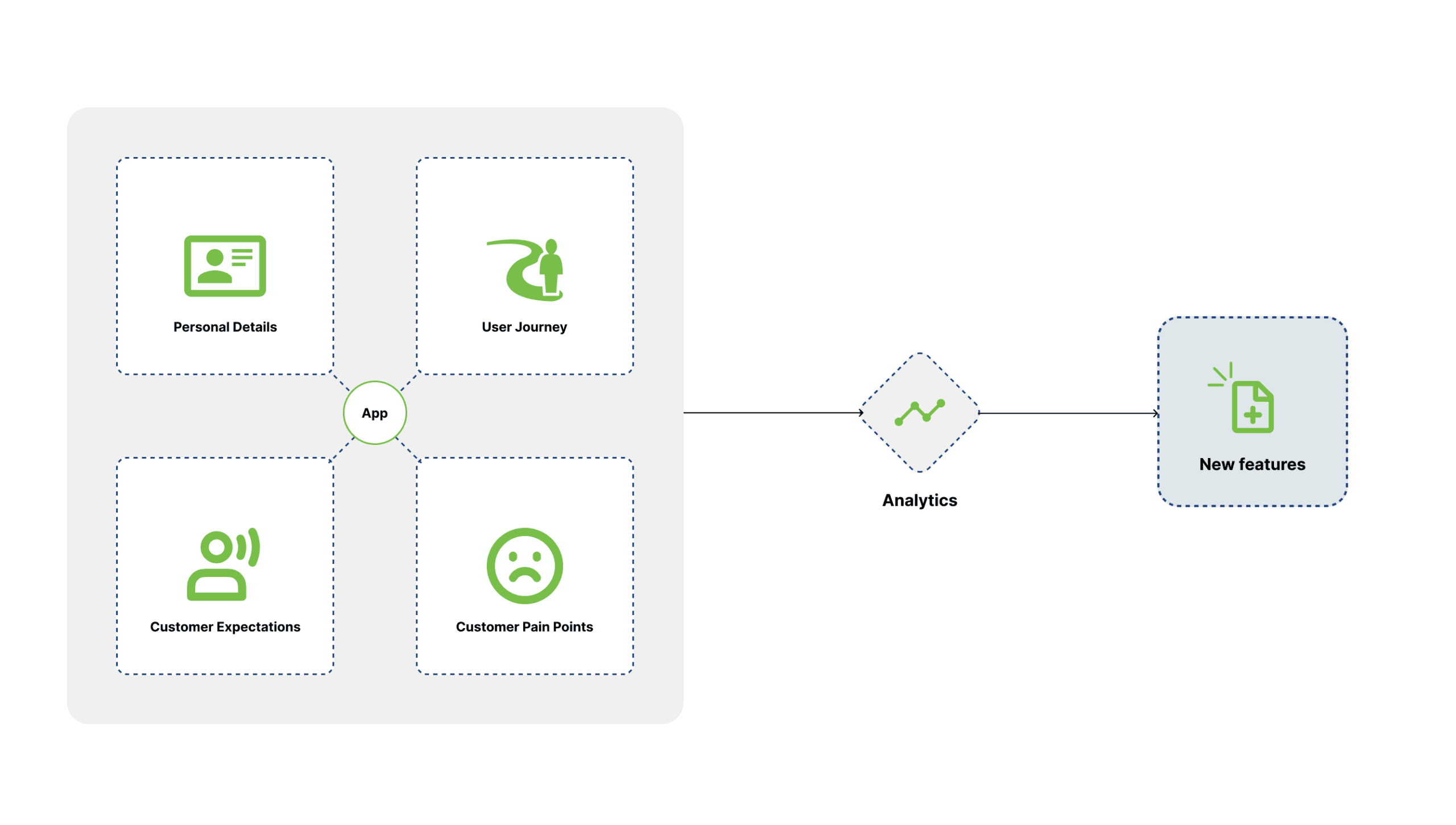Contents
Introduction
In a constantly evolving world, creative ideas alone are insufficient for product development. Data analysis, specifically product analytics, is crucial for optimizing and creating products that drive revenue and enhance the user experience. A comprehensive, data-driven approach throughout the product lifecycle is essential for business success.
Product analytics involves collecting, analyzing, and interpreting data related to a product’s usage, performance, and user behaviour to inform decision-making and enhance product development.
Product Customization
Creating a product is not enough; providing users with tools that ease their work or solve their complexities is the ultimate way to satisfy customers. To understand their needs and challenges, making the product customizable through product personalization is crucial. Employing product analytics to analyze the data you have becomes essential in this process. While analyzing data to add features to the product is important, it is equally crucial to reassess whether the incorporated features make an impact or not. Data plays a significant role not only in designing user interfaces but also in ensuring the effectiveness of the added features.
Netflix uses viewer data to personalize recommendations even based on location, enhancing the user experience. Continuous analysis ensures new features align with user preferences, optimizing the platform for customer satisfaction.

Price Determination
Price determination is crucial as it directly influences revenue generation through product sales. To establish an appropriate price, one must consider all production costs invested in the product. Therefore, maintaining comprehensive production data, including product analytics, is essential for accurate data analysis. Simply assigning a margin is not the primary focus. The key is to have a solid understanding of the market, as users may not purchase the product based solely on a fixed price. Conducting market research, which involves analyzing various datasets, including product analytics, is necessary to establish a market-driven price.
If you want to get better at making strategic decisions, align stakeholders and development teams, and ensure that your strategy guides delivery, then take a look at my strategy model: https://t.co/vi3eWyxUPT#productmanagement #strategy #innovation pic.twitter.com/APS5xVCVhk
— Roman Pichler (@romanpichler) September 15, 2022
Sales Data
Regardless of whether it’s a web or Android application, if there are no sales anticipated, investing time, effort, and resources in creating the product would be a waste. Therefore, it’s essential to present demographic and legal data related to the product to incorporate regulations governing its development in order to streamline product analytics. Operating in the geographic location where the highest sales occur is necessary to address issues, whether for a web application or an Android one. Sales data plays a crucial role in addressing all financial aspects, including legal compliance for transactions if your product involves payment.
Amazon optimizes its web app using sales data for personalized recommendations, efficient inventory management, dynamic pricing, targeted promotions, and to incorporate language based content where the sales are high.
Supply Chain Optimization
While web and Android applications are not physical products, analyzing demand and supply data is crucial. You must have prior data at your disposal, especially when dealing with backend technical aspects. Effective product analytics is essential for managing increasing traffic to ensure efficiency. If your product’s traffic increases day by day and you are unable to maintain efficiency, it will adversely impact users. On the other hand, if your traffic is lower than expected, it will also affect your backend resources, whether human or technical. Therefore, it is necessary to have specific data and product analytics to balance demand and supply chain optimization.
Quality Control
Producing a product with the utmost quality is a commendable goal, but maintaining that quality poses its own set of challenges. It is essential to ensure a steady flow of website traffic for ongoing quality control. Additionally, mobile applications often encounter server issues, which can adversely affect user experience. By leveraging product analytics and data analytics in tandem, one can identify patterns, detect anomalies, and gain insights into potential areas for improvement.
Effectively addressing quality issues requires a thorough data analysis during user testing. Beyond user feedback, scrutinize metrics like server response times and error rates using product analytics. Leveraging data analytics identifies patterns and anomalies, while regular reviews and machine learning enhance proactive issue resolution.
Risk Mitigation
Risk mitigation involves identifying, assessing, and minimizing potential threats to a project or organization. Data plays a vital role by enabling informed decision-making and strategic planning. Accurate and timely data facilitates risk analysis, helping identify vulnerabilities and opportunities for mitigation. Effective data management enhances resilience, enabling proactive measures to reduce the impact of uncertainties. Whether in business, technology, or governance, leveraging data ensures a comprehensive understanding of risks and supports the implementation of effective risk mitigation strategies. Within Product analytics, Avoiding risk enhance your product performance.
In the Global financial crisis of 2008. Financial institutions faced a lack of comprehensive data on the risks associated with complex mortgage-backed securities. Inadequate understanding and assessment of these financial products led to a widespread underestimation of the associated risks.
If you are still wandering what are the things we need to consider and tools for product analytics, watch the video for a deeper understanding.
Conclusion
While there are many strategies involved in creating and optimizing a product, as mentioned, the roles of data analytics and product analytics are vital for the successful operation of a product. An expert partner like Sparity assures you of your product analytics, as we have successfully worked on several product engineering projects, from data analysis to developing applications, and running and maintaining them in accordance with market regulations.




